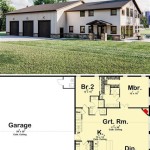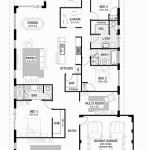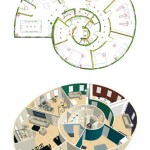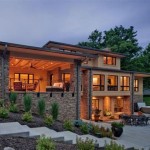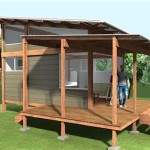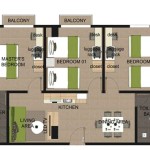Vaulted ceilings are a popular choice for many homeowners looking for a unique and stylish way to maximize the space and style of their home. Vaulted ceilings can provide a sense of openness, drama, and grandeur to any room, while also providing additional headroom and air circulation. But before you commit to a house plan with vaulted ceilings, there are a few things you should know.
How to Design a House Plan with Vaulted Ceilings
When designing a house plan with vaulted ceilings, it’s important to consider the overall design of your home and the function of the space. For example, vaulted ceilings can be used to create a larger, more open feeling in an area such as a great room, or to provide a dramatic effect in a formal dining room. In addition, vaulted ceilings can be used to add an extra layer of insulation and to help regulate temperatures in the home.
When designing a house plan with vaulted ceilings, there are several factors to consider. First, consider the height of the ceiling: vaulted ceilings are usually taller than standard ceilings, so they require more space and materials to build. Also, think about the shape of the ceiling: vaulted ceilings can be curved, sloped, or even angled, depending on the desired effect. Additionally, think about the materials used to construct the ceilings: wood, plaster, and drywall are all popular choices for vaulted ceilings.
Advantages of House Plans with Vaulted Ceilings
Vaulted ceilings can provide a number of advantages for homeowners. In addition to creating a sense of openness and grandeur, vaulted ceilings can also provide more insulation and help regulate temperatures in the home. Additionally, vaulted ceilings can provide a unique design element to any room, helping to create a dramatic and beautiful effect. Lastly, vaulted ceilings can provide a sense of height and airiness to a space, making it look and feel larger than it actually is.
Disadvantages of House Plans with Vaulted Ceilings
Although vaulted ceilings can provide a number of benefits, there are some potential drawbacks as well. First, vaulted ceilings can be expensive to build and require more materials than standard ceilings. Additionally, vaulted ceilings can be difficult to heat and cool, as the height of the ceiling can cause the temperature to fluctuate. Lastly, vaulted ceilings can make it difficult to hang curtains and other window treatments, as the height of the ceiling may cause the curtains to drape too low.
Tips for Choosing House Plans with Vaulted Ceilings
When choosing a house plan with vaulted ceilings, it’s important to consider the overall design of your home and the function of the space. Make sure to consider the height and shape of the ceiling, as well as the materials used to construct it. Additionally, think about the advantages and disadvantages of vaulted ceilings and how they can affect the overall design and feel of the space. Finally, keep in mind any special considerations for installing window treatments and other furnishings in rooms with vaulted ceilings.
Vaulted ceilings can provide a unique and stylish way to maximize the space and style of your home. By considering the height, shape, and materials used to construct the ceiling, as well as the advantages and disadvantages of vaulted ceilings, you can ensure that your house plan with vaulted ceilings is the perfect fit for your home.















Related Posts

